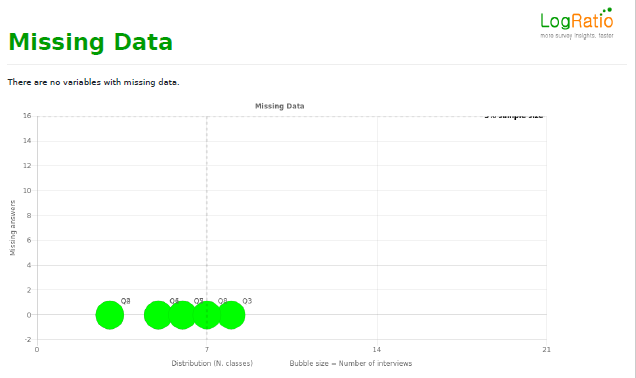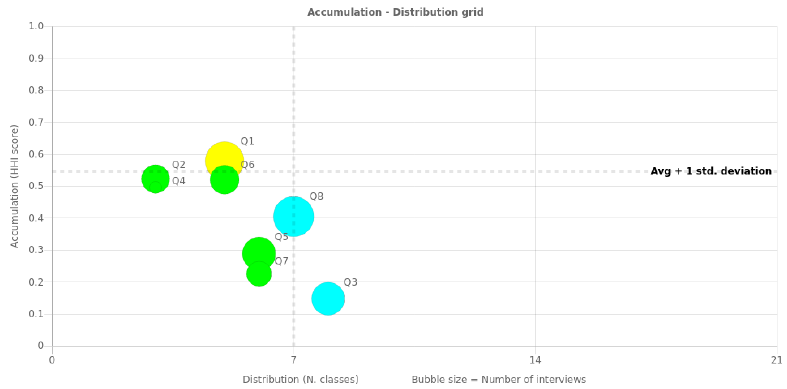LogRatio inspects the missing answers of a survey, if any, and makes suggestions on how to improve the data gathering process, in case the survey is repeated.
Large numbers of missing answers to one or more survey questions increase the error level and therefore produce broader confidence intervals, which in turn increase the uncertainty of a decision.

Answer Classes
The analysis of the answer classes of a survey question applies mainly to rank-ordered answer scales, which are scales in ascending or descending order, like a Likert’s scale.
In the PDF report LogRatio plots on the Accumulation – Distribution Grid the questions of a survey according to their number of answer classes, called Distribution (horizontal-axis), and according to the concentration of respondent answers across classes, called Accumulation (vertical-axis) and represented by the Herfindahl index, HHI. The bubble size refers to the estimated time to read and answer the question.

The horizontal-axis of the grid splits at the 7th answer class, in accordance with research that recommends using answer scales with 3 to 7 classes. Less than 3 classes could result in unrealistic answers while allowing more than 7 answer classes increases the risk that respondents will start using their own scale, so giving questionable answers.
The vertical-axis separates HHI-scores larger than the threshold from the rest. The threshold is set at the average score plus one standard deviation of HHI. Questions above the threshold level have an accumulation of answers in one or more classes, which makes them good candidates to look for significantly larger answer classes, because they could supply strong evidence to support decisions and insights.
Bubbles in the upper region of the grid are candidates for scale review because their answers are concentrated on one or few answer classes.
In this example, for instance, Q1 and Q6 present signs of concentration on certain answer options and it is worth checking if changing the scale would result in a lower level of concentration of the answers.
